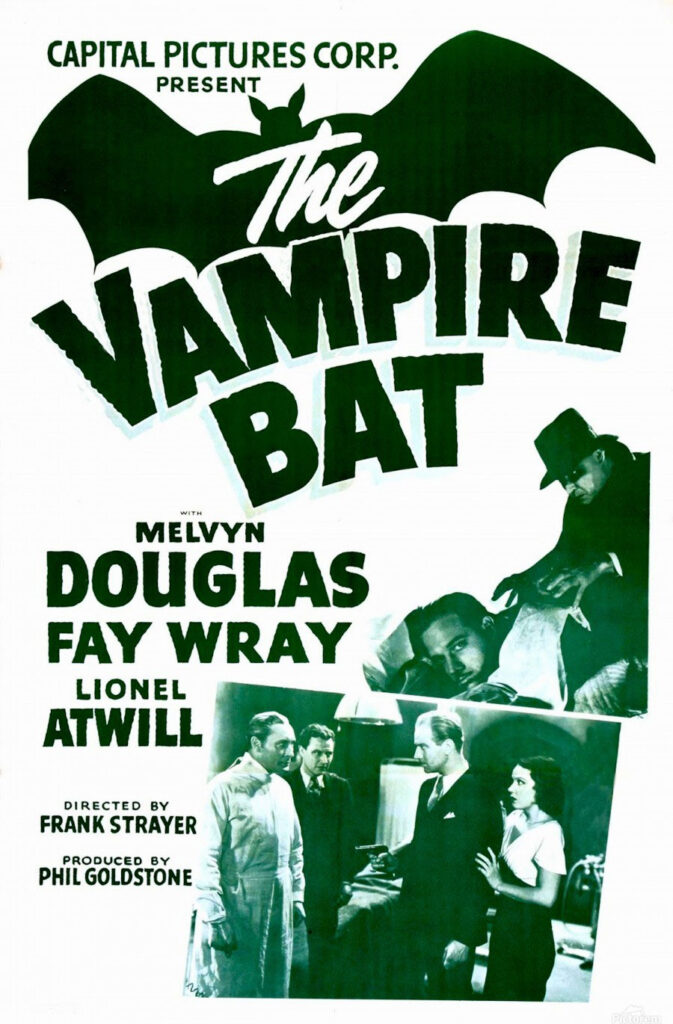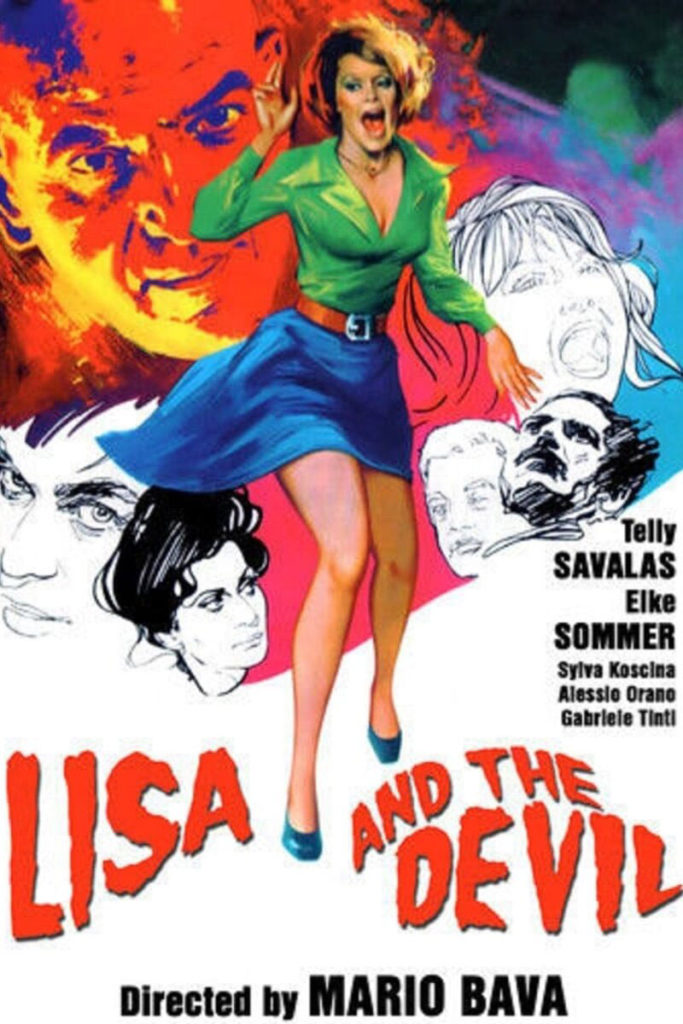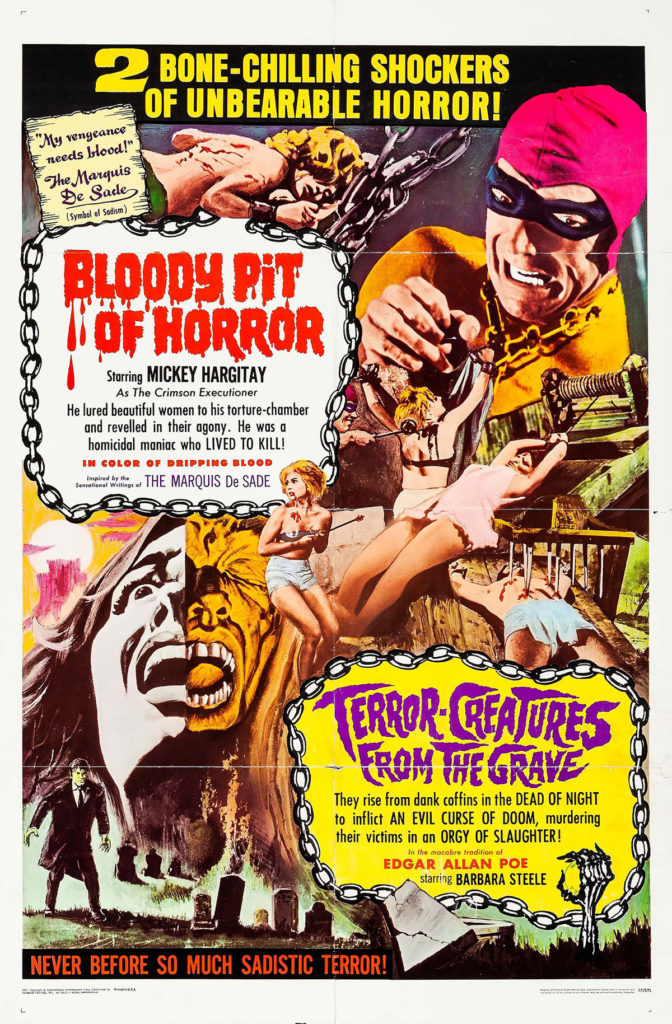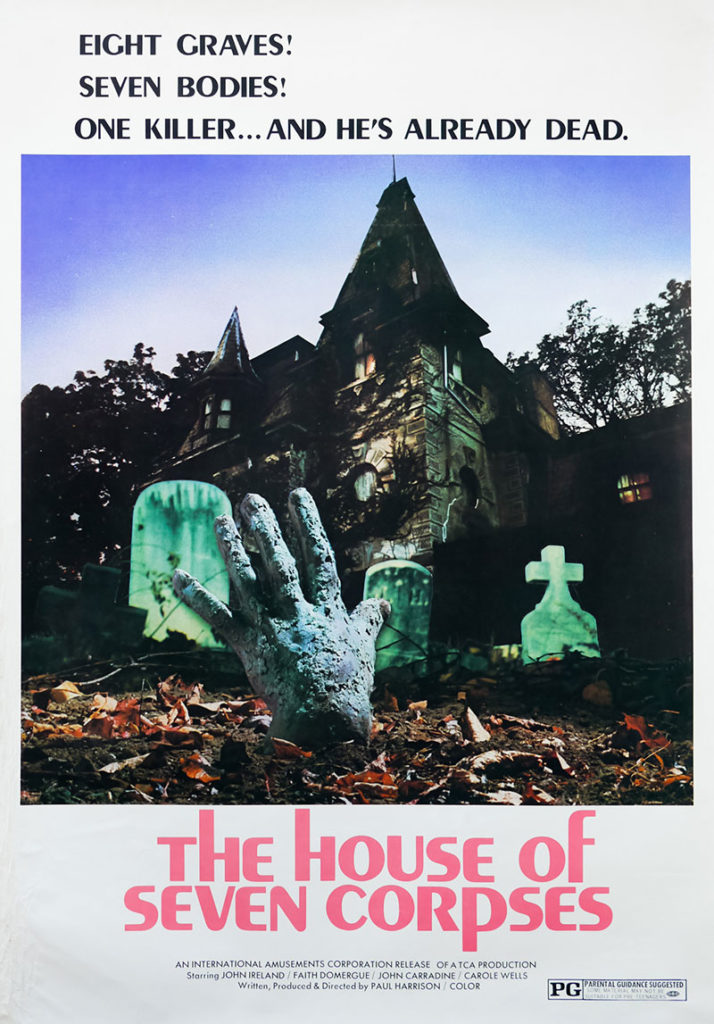 The movie business can be an unforgiving hustle. A case in point is The Vampire Bat, the 1933 release from Majestic Pictures. According to the internet, so it must be true, stars Fay Wray and Lionel Atwill had finished filming Mystery of the Wax Museum for Warner Bros., and that film had entered post-production. Majestic seized on this, signing Wray and Atwill to be in another horror flick with quick turnaround, getting a jump on Warner Bros. in both the industry trades and in theatrical release. It worked. The Vampire Bat was a winner for Majestic. It helps that it’s also a decent little horror flick.
The movie business can be an unforgiving hustle. A case in point is The Vampire Bat, the 1933 release from Majestic Pictures. According to the internet, so it must be true, stars Fay Wray and Lionel Atwill had finished filming Mystery of the Wax Museum for Warner Bros., and that film had entered post-production. Majestic seized on this, signing Wray and Atwill to be in another horror flick with quick turnaround, getting a jump on Warner Bros. in both the industry trades and in theatrical release. It worked. The Vampire Bat was a winner for Majestic. It helps that it’s also a decent little horror flick.
An example of gothic horror American style, The Vampire Bat tells the story of a village in Eastern Europe that is being plagued by murders. All the victims are killed in the night, with what looks to be a minimum of struggle, and all the dead are drained of blood. Of course, there are also the telltale marks of the vampire on all the victims’ necks. The village elders are convinced that a vampire stalks the streets, but police inspector Karl Brettschneider (Melvyn Douglas) is not. Continue reading “The Vampire Bat”

 Lisa and the Devil, the 1973 film from Italian auteur Mario Bava, has become one of his more renowned films in the last couple of decades. I first saw it around twenty years ago with a roommate who was watching it for her film class at NYU. Upon release, though, it was a butchered product, with a framing story shot and added after Bava delivered his cut. Of this film, which had been released under the title of La Casa dell’esorcismo (House of Exorcism), Bava said, “La casa dell’esorcismo is not my film, even though it bears my signature. It is the same situation, too long to explain, of a cuckolded father who finds himself with a child that is not his own, and with his name, and cannot do anything about it.”
Lisa and the Devil, the 1973 film from Italian auteur Mario Bava, has become one of his more renowned films in the last couple of decades. I first saw it around twenty years ago with a roommate who was watching it for her film class at NYU. Upon release, though, it was a butchered product, with a framing story shot and added after Bava delivered his cut. Of this film, which had been released under the title of La Casa dell’esorcismo (House of Exorcism), Bava said, “La casa dell’esorcismo is not my film, even though it bears my signature. It is the same situation, too long to explain, of a cuckolded father who finds himself with a child that is not his own, and with his name, and cannot do anything about it.” Pacemaker Pictures, the English-language distributors of Terror-Creatures from the Grave, the 1965 Italian gothic horror flick, sure went all in on the title. Perhaps they had a shortlist and couldn’t decide between Terror from the Grave and Creatures from the Grave so, like some parents, decided to burden their charge with a hyphenated name. It’s a mouthful, but has loads of kitsch to it.
Pacemaker Pictures, the English-language distributors of Terror-Creatures from the Grave, the 1965 Italian gothic horror flick, sure went all in on the title. Perhaps they had a shortlist and couldn’t decide between Terror from the Grave and Creatures from the Grave so, like some parents, decided to burden their charge with a hyphenated name. It’s a mouthful, but has loads of kitsch to it. By 1974, gothic horror films were falling out of fashion. The year saw the last gasps from the major franchises of Hammer Film Productions, with the releases of Frankenstein and the Monster from Hell and The Legend of the 7 Golden Vampires. The genre had come a long way, but by the time this film, The House of the Seven Corpses, was released, seriously bloody slasher horror was making its presence felt. If a filmmaker was going to do gothic horror, it needed to have a twist.
By 1974, gothic horror films were falling out of fashion. The year saw the last gasps from the major franchises of Hammer Film Productions, with the releases of Frankenstein and the Monster from Hell and The Legend of the 7 Golden Vampires. The genre had come a long way, but by the time this film, The House of the Seven Corpses, was released, seriously bloody slasher horror was making its presence felt. If a filmmaker was going to do gothic horror, it needed to have a twist.